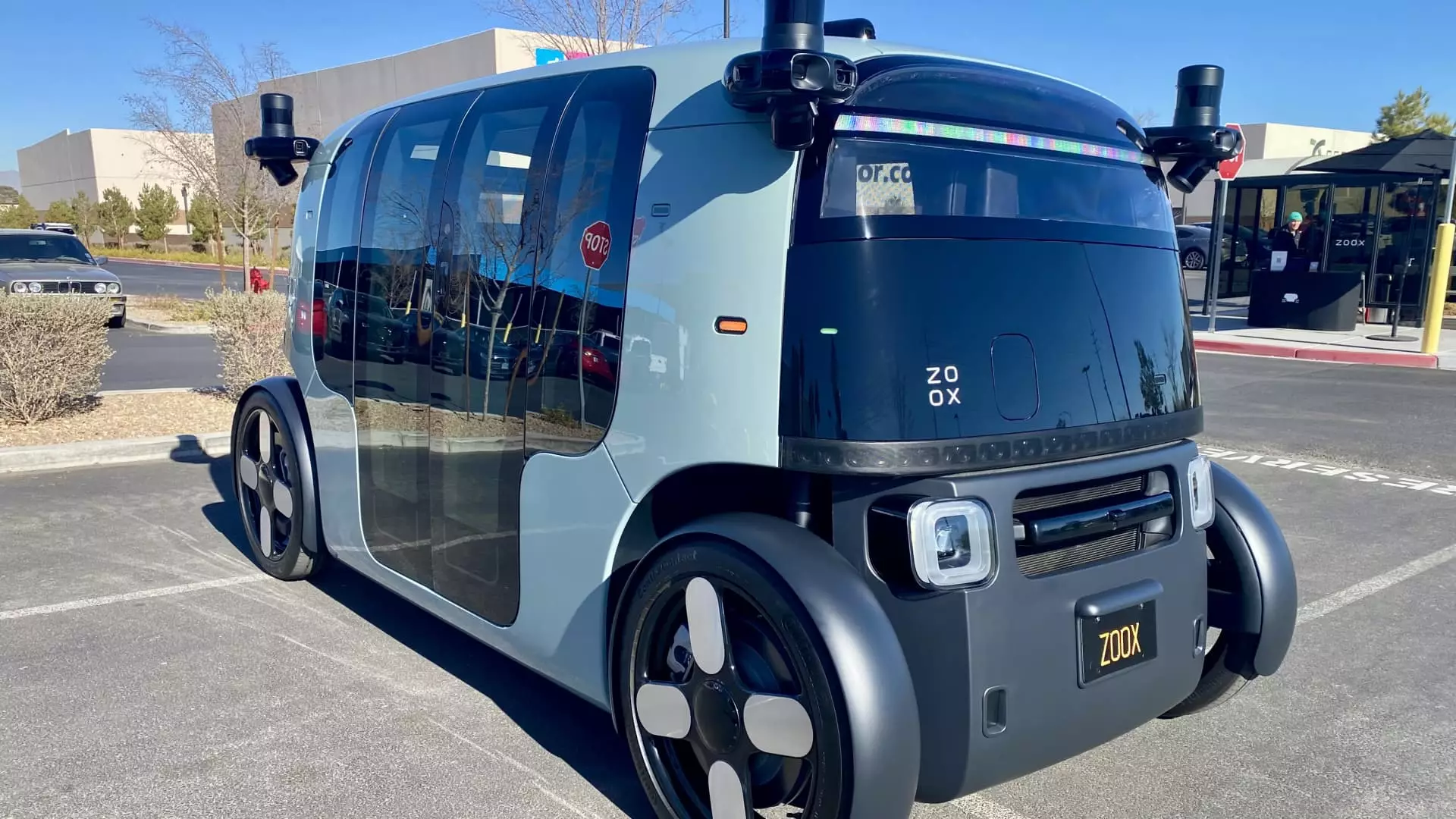As automotive technology rapidly evolves, 2023 is shaping up to be a vital year for Amazon’s autonomous vehicle subsidiary, Zoox. With a fresh commitment to expand its operations and market its robotaxi services, Zoox aims to revolutionize urban transportation on an unprecedented scale. Founded in 2014 and acquired by Amazon for a staggering $1.3 billion in 2020, Zoox has built its brand on the premise of a driverless future. The company’s co-founder and Chief Technology Officer, Jesse Levinson, eloquently articulated their ambitious plans, stating, “We’re excited for that,” in reference to the expansive work ahead.
Despite Zoox’s optimism, the backdrop for its ambitions is one of industry tension and skepticism. Several major players in the autonomous vehicle space, including General Motors and Ford, have dismantled their self-driving units, reflecting a broader trend of investor wariness. This has not deterred Zoox, which continues to operate a handful of prototype vehicles while preparing for public deployment. The company has been testing its custom-built robotaxis—devoid of traditional steering wheels or pedals—on the roads of Las Vegas, San Francisco, and Foster City, California. Las Vegas is anticipated to be the first market where they will roll out their services to consumers.
One unique aspect of Zoox’s approach lies in its design philosophy. Unlike other companies that retrofit existing vehicles for autonomy, Zoox has created its robotaxis from the ground up. This gives their vehicles a distinctive aesthetic, often likened to a “box” or “toaster” due to their unconventional shape. The design promotes functionality, with interior seating arrangements that allow multiple passengers to sit across from each other, enhancing social interaction during rides. However, the absence of a human driver raises numerous questions about consumer acceptance, especially in a market that is still grappling with the concept of vehicle automation.
To catalyze interest in its service, Zoox plans to introduce an “Early Rider Program” in Las Vegas, an initiative aimed at familiarizing the public with autonomous vehicle technology before a full-scale launch later this year. Following Las Vegas, the company has grand plans to expand into urban centers like San Francisco, Miami, and Austin, although specific timelines remain unspecified. Levinson’s assertion that a widespread uptake could be seen by the end of the decade reflects both ambition and a strategic long-term vision within the company.
While Zoox aims high, it operates within a competitive landscape. Waymo, backed by Alphabet, remains a formidable opponent and the current leader in the robotaxi sector. Waymo has been offering supervised rides to the public since 2017, gradually progressing to unsupervised, driverless rides by 2019. Compared to this success, Zoox faces a steep hill to climb. Industry analysts like Sam Abuelsamid believe that Zoox’s technological advancements are on the right track but express skepticism regarding its business model. As the challenge of profitability looms large, many companies—including Tesla—have had to recalibrate their lofty ambitions surrounding driverless transportation.
In the realm of autonomous vehicles, safety is paramount. Zoox’s careful approach towards scaling its operations underscores a deep understanding of this concern. Despite technological advancements, there have been regulatory hiccups and on-road incidents that have drawn scrutiny. For example, GM’s Cruise division has faced significant barriers, including the grounding of its fleet after a high-profile pedestrian accident. These incidents serve as a cautionary tale for Zoox, reinforcing the notion that unchecked ambition can lead to severe repercussions.
Zoox’s aspirations, while commendable, come amid a whirlwind of uncertainties inherent in the commercialization of autonomous vehicles. The landscape appears rife with obstacles—regulatory, technological, and financial—that may hinder progress. Yet, with the backing of Amazon and a steadfast commitment to innovation, Zoox carries the torch of hope for a future where robotaxis will reshape urban mobility. The road ahead may be fraught with challenges, but as Levinson expressed, those involved are “excited” about the potential for self-driving vehicles to become a favorite mode of transportation in major U.S. cities. Whether Zoox can fulfill these ambitious goals remains to be seen, but its journey is set to be among the most closely watched in the transportation industry.

